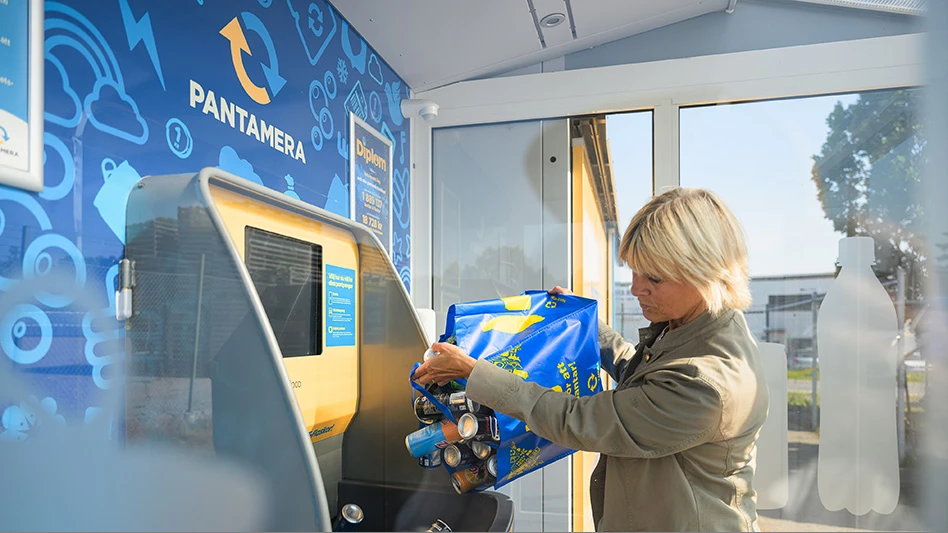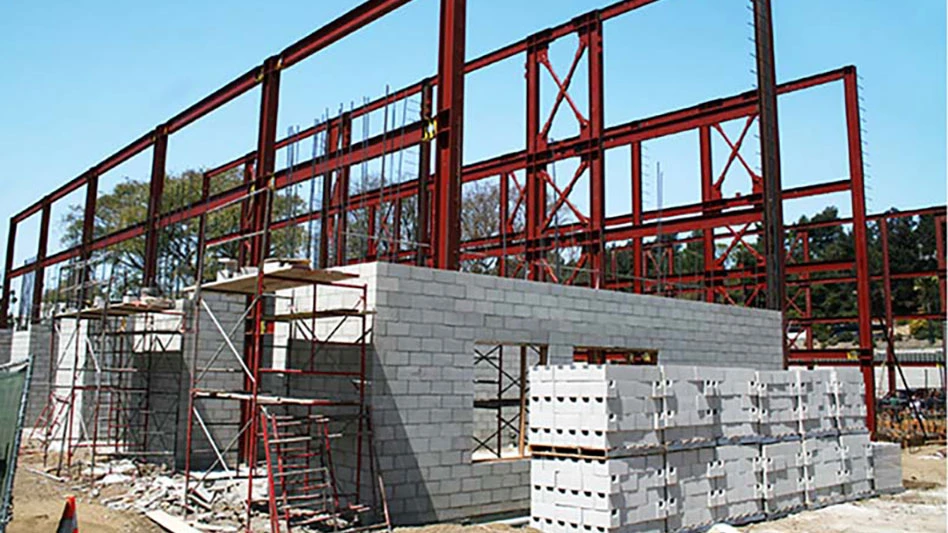 There is a growing realization around the world that electronic scrap is a vitally important source of many strategic and valuable metals. Increasingly stringent regulations and high commodity prices mean “urban mining” of electronic scrap is becoming an ever more attractive option for raw material supply. Waste electrical and electronic equipment (WEEE), which consists of discarded electrical or electronic devices from domestic, commercial and industrial sources, is attracting a great deal of attention.
There is a growing realization around the world that electronic scrap is a vitally important source of many strategic and valuable metals. Increasingly stringent regulations and high commodity prices mean “urban mining” of electronic scrap is becoming an ever more attractive option for raw material supply. Waste electrical and electronic equipment (WEEE), which consists of discarded electrical or electronic devices from domestic, commercial and industrial sources, is attracting a great deal of attention.
Although, historically, the disposal of electronics may have been informal, with consequent health and pollution problems, the emphasis is now firmly on the recovery of the precious metals, including copper, gold, silver, platinum and palladium, in addition to other raw materials that are contained in these devices. As a result, there has been growing interest in WEEE recycling technologies beyond the traditional methods. This article presents one such example: plasma smelting.
Current Approach
The recovery of reusable materials from WEEE using traditional technologies requires a series of steps from collection through various pre-processing, segregation and sorting stages, with materials such as aluminum, stainless steel and various plastics being removed at each point in the process. Finally, at the end of these operations, you have a collection of crushed printed circuit boards (PCBs) that typically represent 3 to 5 percent of the original WEEE devices. PCBs contain the majority of the precious metals and are usually passed to third parties for final refining.
Finally, to separate the different precious metals from the PCBs into pure metals usually requires dissolving the metals in acids followed by various electroplating or other chemical methods. Unfortunately, much of the precious metals are tied up in electrical components and bonded to PCBs and other less valuable materials, which can make processes like acid digestion expensive or ineffective at this stage. Consequently, end refiners often melt the materials first and extract the precious metals as an alloy with copper that is easier to dissolve in acids.
Because of the similarities with the extraction of precious metals from copper and its ores, historically the majority of crushed PCBs has been sent to a limited number of large copper smelting companies for assay and final refining. These refineries use a variety of melting methods, including electric arc furnaces, rotary converters and so forth.
However, the amount of WEEE being collected in a coordinated and commercially valuable manner is now increasing, creating growing demand for alternative melting and pre-concentration methods. One of the most important of these methods is plasma smelting, which has been widely used for the recovery of platinum group metals (PGMs) from catalysts for many years.
Traditional Methods
Typical PCB scrap contains three main parts: the precious metals, organic material (for example, plastics and resins) and the part that turns into ash when it is burned. When PCB scrap is melted, the ash becomes a bath of molten slag, the metals either melt to form droplets or remain solid metal particles, and the plastics and resins burn off. The droplets and particles of metal are much denser than the slag and will sink and settle out (eventually) in the base of the furnace, leaving the metal free of the slag. However, many of the metal particles and droplets are extremely small and sink very slowly. Furthermore, their slow sink rate makes them very susceptible to disturbances of the slag bath, such as stirring; therefore, these small particles can have a great reluctance to settle out completely under all but the most ideal conditions.
Plasma Smelting
During plasma smelting of the crushed PCBs, the metal droplets are encouraged to fall more quickly by adding another liquid metal (usually copper) to the slag bath with the scrap feed. Often in the case of WEEE there is usually enough copper already in the scrap to avoid the need to add additional metal.
Because the droplets of this “collector” metal tend to be larger than the particles of precious metals, they sink through the slag more quickly. They then dissolve the other metal particles as they fall and clean the slag of its valuable metals in a shorter time and under more practical melting conditions.
 In the plasma smelting of crushed PCBs, the material is first mixed with a small amount of lime, which helps to reduce the melting point of the slag and makes it more fluid; this in turn helps the metal droplets to sink more quickly. This blend of material is then screw-fed into the plasma furnace, which has a water-cooled steel outer shell lined inside with insulating refractory and a graphite crucible that contains the molten slag and metal. The inside of the furnace is kept at roughly 1,500 degrees Celsius (2,700 degrees Fahrenheit) by a high-temperature plasma arc, which is produced by a water-cooled plasma torch. The plasma arc melts the crushed PCBs and vaporizes the plastics and resins, producing a bath of molten slag floating on top of a layer of molten metal in the graphite crucible.
In the plasma smelting of crushed PCBs, the material is first mixed with a small amount of lime, which helps to reduce the melting point of the slag and makes it more fluid; this in turn helps the metal droplets to sink more quickly. This blend of material is then screw-fed into the plasma furnace, which has a water-cooled steel outer shell lined inside with insulating refractory and a graphite crucible that contains the molten slag and metal. The inside of the furnace is kept at roughly 1,500 degrees Celsius (2,700 degrees Fahrenheit) by a high-temperature plasma arc, which is produced by a water-cooled plasma torch. The plasma arc melts the crushed PCBs and vaporizes the plastics and resins, producing a bath of molten slag floating on top of a layer of molten metal in the graphite crucible.
The volume of slag produced by the melting of the PCBs tends to be much greater than the volume of metal. Therefore, to prevent excessive buildup of slag in the furnace, the molten slag is allowed to overflow continuously from an upper tap hole during normal operation. A second lower tap hole is then opened periodically to remove the layer containing the precious metals, so that plasma smelting is a continuous process rather than a batch process. The metals collected in this way are then poured out on a steel casting table (see photo at left), where they are allowed to solidify into a thin sheet. Once cold, the collected metals are crushed and sent to a refinery, where the precious metals are recovered.
The exhaust gases from the furnace flow through a thermal oxidizer and then into a high-temperature filter, where the acid gases are removed by dry scrubbing before the gases are discharged to the atmosphere via a stack. The composition of the off-gas is rigorously controlled to ensure that the operation is compliant with emissions regulations.
As an additional benefit, the slag produced by the plasma melting process has been classified by the U.K. Environment Agency as a product and can be sold for use as an aggregate substitute.
Plasma's Benefits
The high value of the metals contained in PCBs means that losses of precious metals at each processing stage need to be kept to a minimum. In fact, because Tetronics’ plasma recovery technology is also used for the recovery of PGMs from industrial and automotive catalysts where the value per ton of the recovered PGM is even higher than the precious metals recovered from WEEE, Tetronics’ plasma smelting system has been designed with recovery performance as the key priority. As a result, tests on a variety of WEEE at both pilot plants and full commercial scale plants consistently show that this technology achieves industry-leading recovery rates for each one of the precious metals, including those present at very low initial concentrations. In the case of copper, gold and silver, recovery rates are typically close to 100 percent, while platinum and palladium recovery rates of nearly 99 percent have been observed in commercial Tetronics plasma melting units for many years. These high recovery rates are especially useful in recovering the platinum and palladium from WEEE, because they have a substantial value but currently are often excluded from refining owing to their low concentrations.
The high intensity of heating that can be achieved with a plasma arc without compromising the recovery of precious metals means that plasma furnaces can be designed with a small physical size. Plasma melting also typically generates less exhaust gas than fossil-fuel heating technologies, which reduces the footprint and cost of the exhaust gas cleaning systems required. Both of these factors make plasma melting technology highly suitable for processing 2,000 to 10,000 metric tons of PCBs per year.
Another important (but less obvious) benefit of smelting the PCB scrap at this stage is that the copper-precious metal alloy from the plasma melting is more concentrated in precious metals and more homogeneous than the original crushed PCBs. This can greatly reduce the difficulties of obtaining a reliable assay of the precious metals content of the material, thereby ensuring greater transparency and accuracy in the valuation of the WEEE between the recycler and the final refiner. The alloy also has less volume and mass compared with the original crushed PCBs, which reduces transportation and storage costs for the processor.
Growth Market
The collection and processing of WEEE is expanding steadily across the world, and every year new and more sophisticated techniques are developed for the crushing and sorting of WEEE into its different material fractions. These factors are driving strong growth in the demand for methods to recover the scarce and valuable metals that are contained in the PCBs in particular. Plasma smelting technology has been used for the recovery of PGMs from a wide range of catalysts for many years and can provide a well-proven alternative route for WEEE operators to extract more value from their crushed PCBs. This process can achieve a compelling combination of industry-leading recovery rates for precious metals, flexibility and simplicity of operation, small physical footprint and excellent environmental performance, and can be installed at a new facility or retrofitted alongside existing WEEE recycling operations.
The author is technical director of Tetronics Ltd., www.tetronics.com, based in Swindon, U.K.
Get curated news on YOUR industry.
Enter your email to receive our newsletters.

Explore the April 2012 Issue
Check out more from this issue and find your next story to read.
Latest from Recycling Today
- CP Group announces new senior vice president
- APR publishes Design Guide in French
- AmSty recorded first sales of PolyRenew Styrene in 2024
- PRE says EU’s plastic recycling industry at a breaking point
- Call2Recycle Canada, Staples Professional expand partnership
- Circular Services breaks ground on north Texas MRF
- Tariff uncertainty results in choppy nonferrous scrap flows
- CATL, Ellen MacArthur Foundation establish battery partnership





